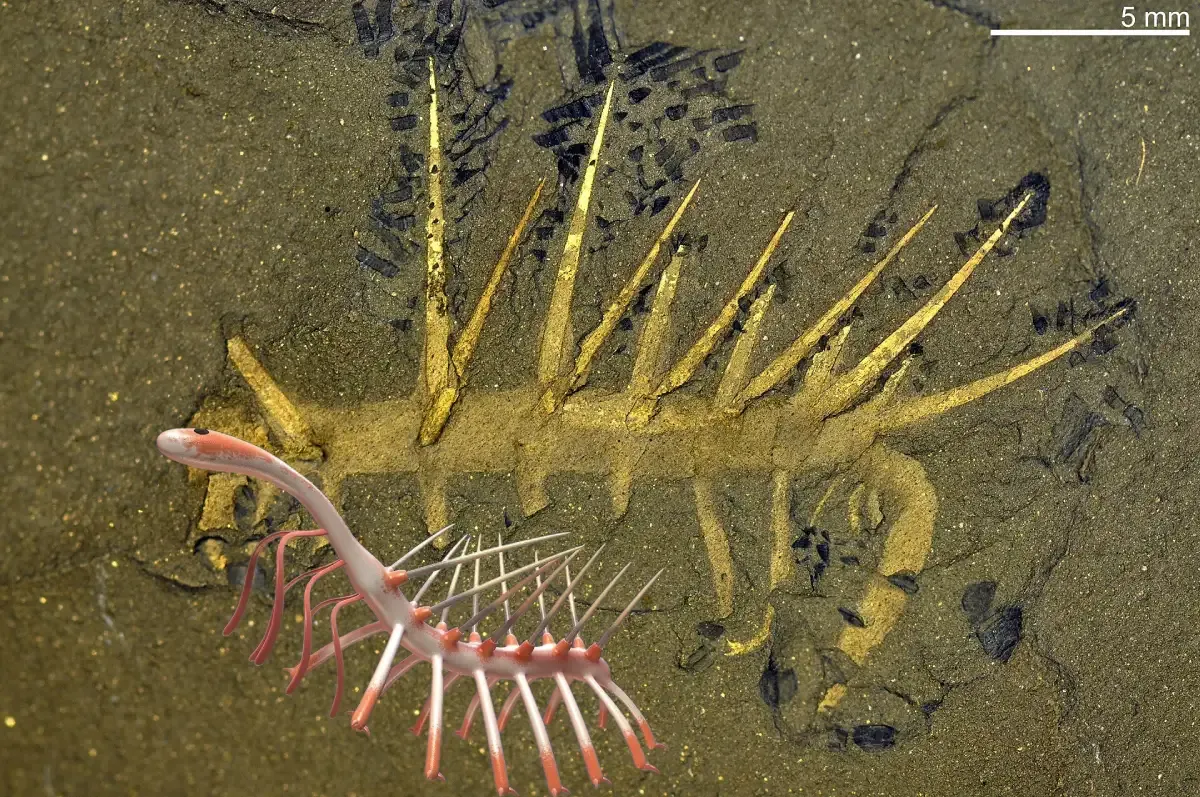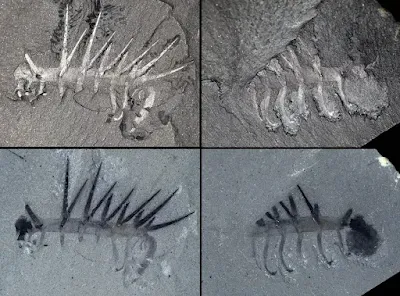Hallucigenia: The Alien-Like Creature That Once Roamed the Earth
Hallucigenia is a freaking weird animal. It was a worm-like creature that lived in the Cambrian period, about 508 million years ago. Hallucigenia had a long, segmented body with spikes running down its back. It also had seven pairs of legs, which were arranged in a circle around its body.
Hallucigenia is one of the most bizarre animals that ever lived. It had a segmented body with spines, and its head was a mystery for many years. Scientists now believe that Hallucigenia was a worm-like creature that lived in the ocean during the Cambrian period, about 500 million years ago.
Hallucigenia was first discovered in the Burgess Shale, a fossil bed in British Columbia, Canada. The fossils were so strange that scientists initially thought they were the remains of plants or jellyfish. It wasn't until the 1970s that scientists figured out that Hallucigenia was actually an animal.
 |
| Fossil holotype of Hallucigenia sparsa from the Burgess Shale with Restoration of H. sparsa |
The biggest mystery about Hallucigenia was its head. The fossils showed a series of spines that seemed to stick out from the front of the animal. Scientists originally thought that these spines were the animal's legs, but this didn't make sense because the spines were arranged in a circle.
In the 1970s, a team of scientists led by Simon Conway Morris proposed a new interpretation of Hallucigenia. They argued that the spines were actually the animal's back legs, and that its head was actually located at the other end of the body. This interpretation was supported by the discovery of new fossils that showed the animal's head in more detail.
The new interpretation of Hallucigenia made it much more clear how the animal moved. It was a worm-like creature with a long, flexible body. It used its spines to grip onto the seafloor, and it moved by dragging its body along. Hallucigenia probably ate small animals and plants.
Hallucigenia is a fascinating animal that reminds us of how little we know about the history of life on Earth. It is a reminder that there are still many mysteries to be solved in the fossil record.
 |
| Various holotypes of Hallucigenia sparsa fossils from the Burgess Shale |
Facts about Hallucigenia
Here are some additional facts about Hallucigenia:
- It was about the size of a finger.
- It had 7 pairs of spines.
- It had 4 pairs of legs.
- It probably lived in shallow water.
- It was a carnivore.
- It is one of the most well-preserved fossils from the Cambrian period.
In addition to its bizarre appearance, Hallucigenia is also notable for its evolutionary significance. It is one of the earliest known members of the onychophoran group, which includes modern velvet worms. Velvet worms are small, soft-bodied animals that live in moist habitats. They have a number of features that are similar to Hallucigenia, such as a segmented body, spines, and a circle of legs around the body. This suggests that Hallucigenia may be the ancestor of all onychophorans.


%20(1).webp)





